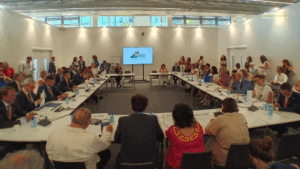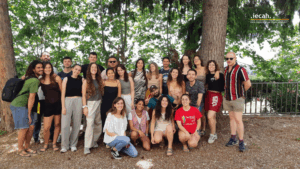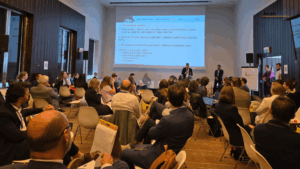The 2024 Spain Floods: Failures in Early Warning, Action, Coordination, and Localisation

 Shivangi Chavda, Marcos Concepción Raba y Alicia Daza
AUTORES/AS
Shivangi Chavda, Marcos Concepción Raba y Alicia Daza
AUTORES/AS
In late October 2024, Spain experienced one of its deadliest floods in decades, with the Valencia region and nearby areas suffering devastating impacts. Over 200 lives were tragically lost, thousands were displaced, and the destruction of infrastructure and livelihoods was extensive. It exposed critical shortcomings in Spain’s disaster preparedness, particularly in areas where rapid urban expansion had encroached upon natural river floodplains. The floods, driven by an isolated low-pressure system that dumped over a year’s worth of rain in just hours, forced rivers to “reclaim” their historical paths, devastating homes and infrastructure built on natural flood zones.
Failures in Early Warning, Early Action, and Localisation
Spain has advanced meteorological systems, however, the floods highlighted significant flaws in early warning dissemination, community preparedness, and localised response:
- Delayed and ineffective communication of warnings
Although Spain’s national weather agency issued severe warnings well in advance, delayed communication at local levels hindered timely action. Warnings failed to reach communities early enough to prevent loss of life and property. A more community-centred approach – where local networks and trusted leaders play a critical role – could have delivered warnings more promptly and effectively. - Encroachment on natural floodplains
The destruction caused by the floods was worsened by widespread urban development on natural floodplains – areas historically reserved for river overflow. This built environment left communities unprotected when the rivers reclaimed their paths. This serves as a reminder of the importance of respecting natural landscapes in urban planning and that by adopting climate-sensitive, localised planning, we can mitigate future risks. - Lack of localisation in preparedness and response
Many affected communities were ill-prepared for a hazard of this scale. as disaster planning and risk communication were not tailored to the unique needs of each community. Local leaders and organisations were underutilised, leaving residents with limited knowledge of evacuation routes or emergency protocols. Localising disaster preparedness by engaging community leaders and adapting protocols to specific needs could have empowered residents to respond more effectively. Notably, over half of the victims in 28 municipalities (104 dead) were over 70 years of age. This starkly demonstrates the urgent need for disaster plans to be more inclusive, addressing the needs of all community members.
- Limited integration of technology with local community systems
Spain has robust national meteorological resources, but these were not sufficiently integrated with local communication systems. This disconnect reduced the impact of early warnings, as communities lacked clear instructions on what actions to take. Combining community networks, local knowledge, and technological tools could make early warning systems (EWS) more accessible, trusted, and effective. - Lack of perception of the risk itself
At the national level, Spain has not been particularly active in this area. Its approach is characterised by a low perception of risk, a very old-fashioned approach to disasters and plans that focus excessively on response and very little on prevention, preparedness or mitigation tasks. This, taken together with a complex distribution of decision-making powers and an obsolete legal framework, have meant that, despite having signed both the Hyogo and Sendai Frameworks, Spain has not made much progress in complying with either.




